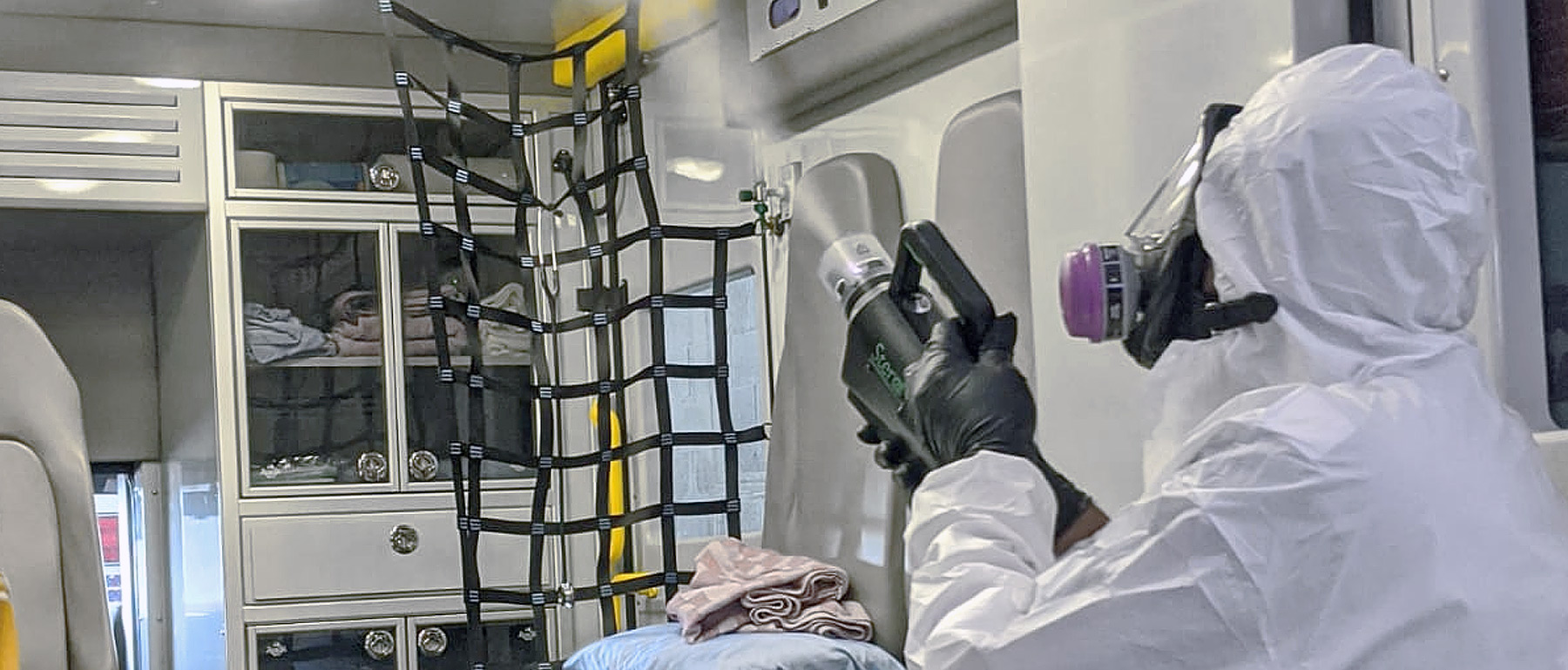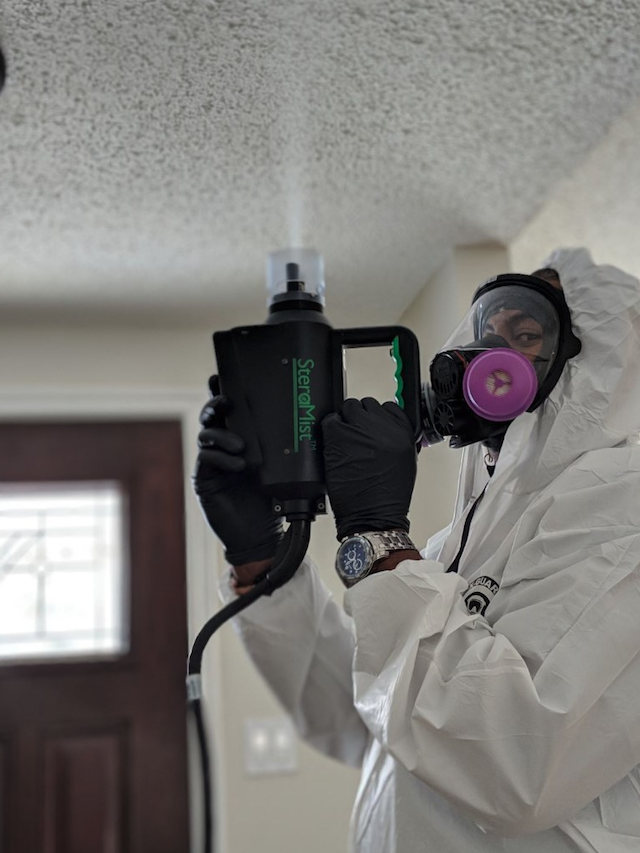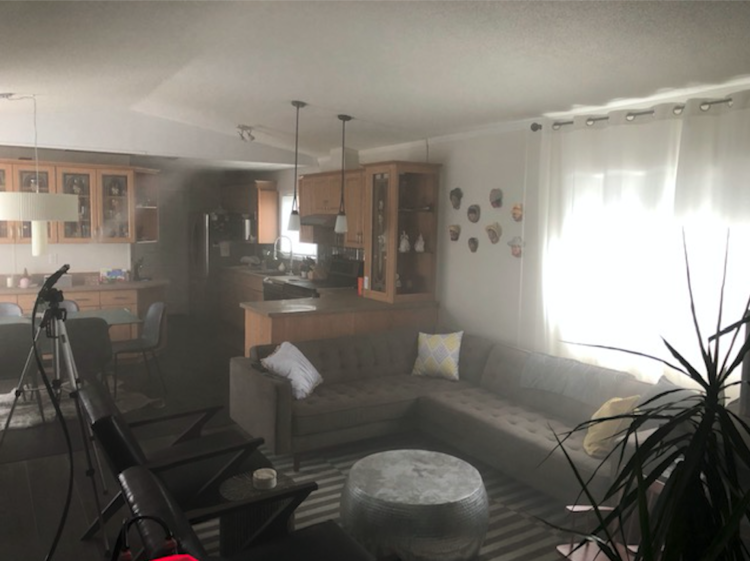Disinfectants in a COVID-19 World, Sean breaks it all down

In 2011, I was fortunate enough to visit Chicago to attend an expo, a place where some of the best minds in contents restoration meet. They shared unique points of view on different topics, from pack outs to contents, to deodorization and decontamination. I was surprised at that point in my career there was no single stage answer for dealing with pathogens. All deodorization methods were simply a masking agent, and all decontamination methods were aqueous.
 In 2020, I find the contents restoration industry is faced with the same conundrum; how do we deal with pathogens? With the current state of the world, COVID-19 has made us take a more finite approach to deal with pathogens.
In 2020, I find the contents restoration industry is faced with the same conundrum; how do we deal with pathogens? With the current state of the world, COVID-19 has made us take a more finite approach to deal with pathogens.
Information seems to come in weekly on the topic, from a wide variety of sources. This microscopic predator, with a size some would speculate, depending on your calculation of measurement, to be less than that of a human hair. Within that circumference, it could be possible to hold as many as 400 to 1000 particles of SARS-Covid2. How do we protect ourselves, and others from this unseen hunter?
Our first direction given was hygiene; wash your hands, do not touch your face, practice social distancing, and wear a mask. But as our best minds quickly found out, this virus had a past that closely followed in the path of its predecessor. The pathogen was quickly deemed airborne.
Given what we now know, and has been confirmed by the world health organization, the size of the pathogen is too small for household and even some commercial means of filtration. It can linger in the air for upwards of 3 hours, minimal pressure, even that of a toilet flush can cause it to gain an altitude of push it further across the room.
We know the pathogen is temperamental, Doctors in the UK have now stated; the virus can have the characteristics of a bacteria that can force dormancy when attached. This offers new challenges in containing its movements. Certain chemicals once offering specific kill rates could now possibly be ineffective according to these new findings.
 We do know that certain chemicals, especially surfactants, or those with a high PH, have the ability to sterilize a pathogen. We also know that cleaning flat surfaces with these approved chemicals, especially on high touch point areas will help stop the spread of contagions. But again, what type of delivery system is best; spray bottle VS technology, that is the question.
We do know that certain chemicals, especially surfactants, or those with a high PH, have the ability to sterilize a pathogen. We also know that cleaning flat surfaces with these approved chemicals, especially on high touch point areas will help stop the spread of contagions. But again, what type of delivery system is best; spray bottle VS technology, that is the question.
Spraying flat surface is excellent protocol but be aware at some point the device your using to wipe up your spray will become contaminated. At that point, you will not be cleaning but contaminating the surfaces you are trying to disinfect & decontaminate. This method does not treat the air that may contain high levels of communicable of a virus and it also does not incubus the contents in an area of question, easily allowing items to be missed. Spraying a door handle may carry an almost perfect kill rate, but one should question large areas. With a virus that could possibly contain hundreds of spores, within the size of a human hair, let caution be your guide.
 Cold fogging technologies have been around since the 1960s or possibly even longer, this is very effective for delivering your solution in a gaseous format. This method completely encases your area of concern within a cloud of sanitization, depending on your solution. However, even though the cloud is vaporous, it has a high parts per million rate of liquid. This added moisture can deposit on textiles often discolouring them, it can compromise sensitive electrical components being a precursor to catastrophic failure.
Cold fogging technologies have been around since the 1960s or possibly even longer, this is very effective for delivering your solution in a gaseous format. This method completely encases your area of concern within a cloud of sanitization, depending on your solution. However, even though the cloud is vaporous, it has a high parts per million rate of liquid. This added moisture can deposit on textiles often discolouring them, it can compromise sensitive electrical components being a precursor to catastrophic failure.
Since the ’60s, fogging technology has advanced to systems utilizing binary ionization technology or having a distribution rate so low, that the solution used is released into the atmosphere in a true gas form. A dry gas, with the same total coverage potential of its predecessor, without the harmful effects while also being 100% more effective! These systems use Hydrogen peroxide as a catalyst with silver nitrate as a secondary kill system. Others utilize a 50,000-Watt cold plasma arch which creates Reactive Oxygen Species (ROS) as the killing agent. These systems encapsulate an area of concern, the gas seeks out protein-based biological materials, not only cleaning the contents and structure but the air as well. This system can cost more per treatment, but given the coverage area, it is also acceptable.
My next potential area of interest brought me to the UV light spectrum, natural and proven effective. Ultraviolet light should have been the answer for deodorization and disinfection, however, there was a problem; UVC light measuring from 100 to 280 Nanometer is needed to produce Vitamin D. UVB light measuring 280 to 315, is widely recognized for its negative effects on human skin and eyes. These rays are directly linked to skin cancer. Most of this light is completely filtered by the atmosphere and does not reach the earth’s surface.
UVA light is unseen at 315 to 400 and is commonly found in tanning beds and directly linked to skin cancer. UVC lighting seemed to be the best answer to the problem of deodorization and decontamination, as this light spectrum has the ability to kill bacteria while also sanitizing the environment. Given the length of time an area had to be irradiated and the fragile lighting equipment, the process could also be questioned by using an adenosine triphosphate test. However, in certain applications, UV lighting has proven exceptionably capable for decontamination purposes.
In our very recent history, we have also been exposed to Electrostatic equipment. The systems operate by using a specialized solution that is combined with air and atomized by an electrode inside the sprayer. The solution at this time is positively charged, this allows the chemical to cling to the surface the cloud is directed to. The question remains, will it sanitize the area of concern?
You will find electrostatic technology everywhere, the only concern is that the solution is not regulated, the distribution rate may be too high causing damage. This system does not treat the air, therefore not a fogger, only treating surfaces, yet this system is very cost-effective and has a wide variety of uses.
 The question of Disinfection technology will continue to be a topic of great concern. As contractors, our choice should be based on the science of each particular system. As the general public, our choice must be made by a specific guideline.
The question of Disinfection technology will continue to be a topic of great concern. As contractors, our choice should be based on the science of each particular system. As the general public, our choice must be made by a specific guideline.
As you determine your cleaning strategy in this COID-19 world, here are some important questions to consider:
- • Will my choice ensure my safety?
• Is it an approved method for not only disinfection but sterilization?
• Will it harm my surrounding and is safe from residue that could possibly harm my family?
Lastly, Cost should be a great consideration, but it is important to not be blinded by it. With today pathogens, the need for a complete solution is greater than ever. You cannot put a value on the potential risk, so why would you put a value on the solution.
Our team at Calgary Contents stays current on new guidelines and understands the technology available to help you find a solution that will meet your needs while keeping you and your family and friends safe.

